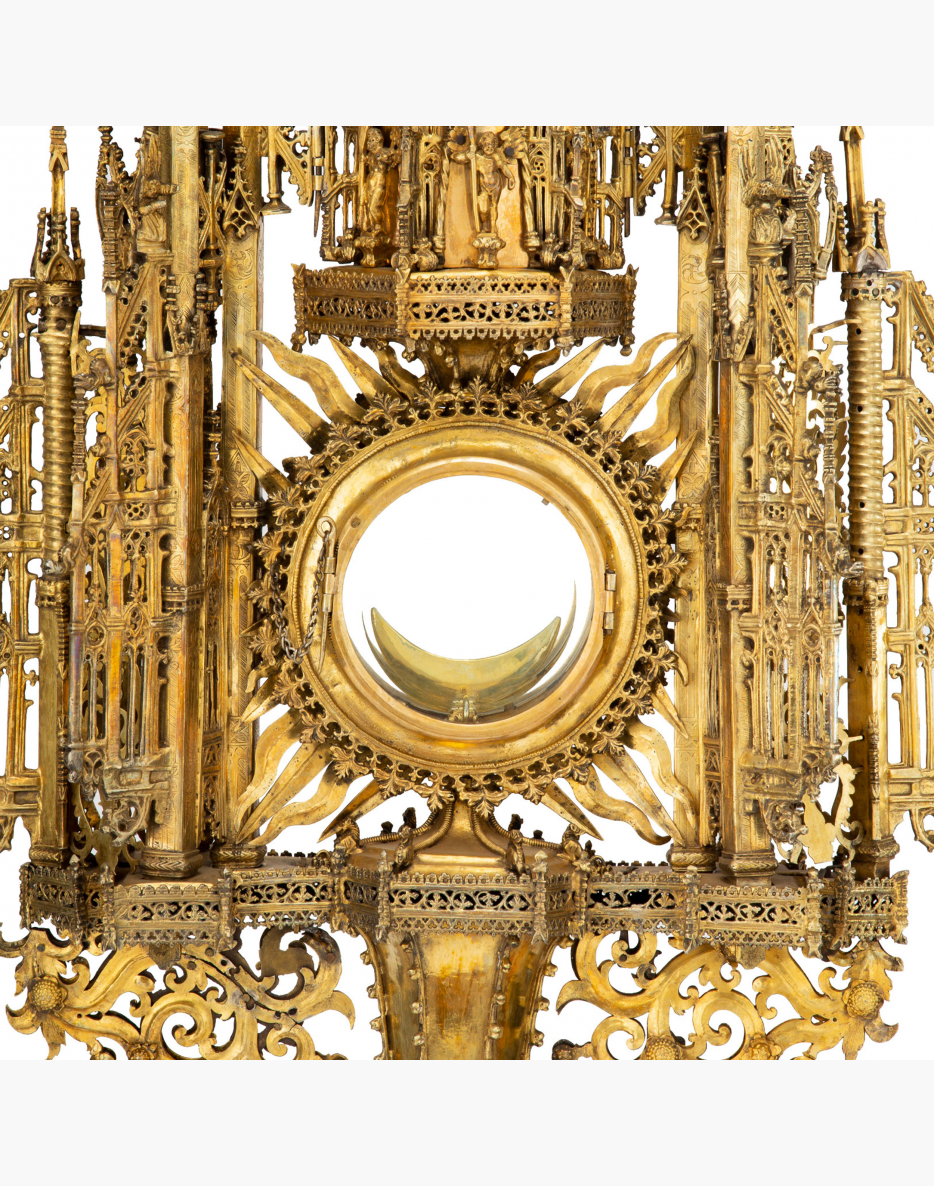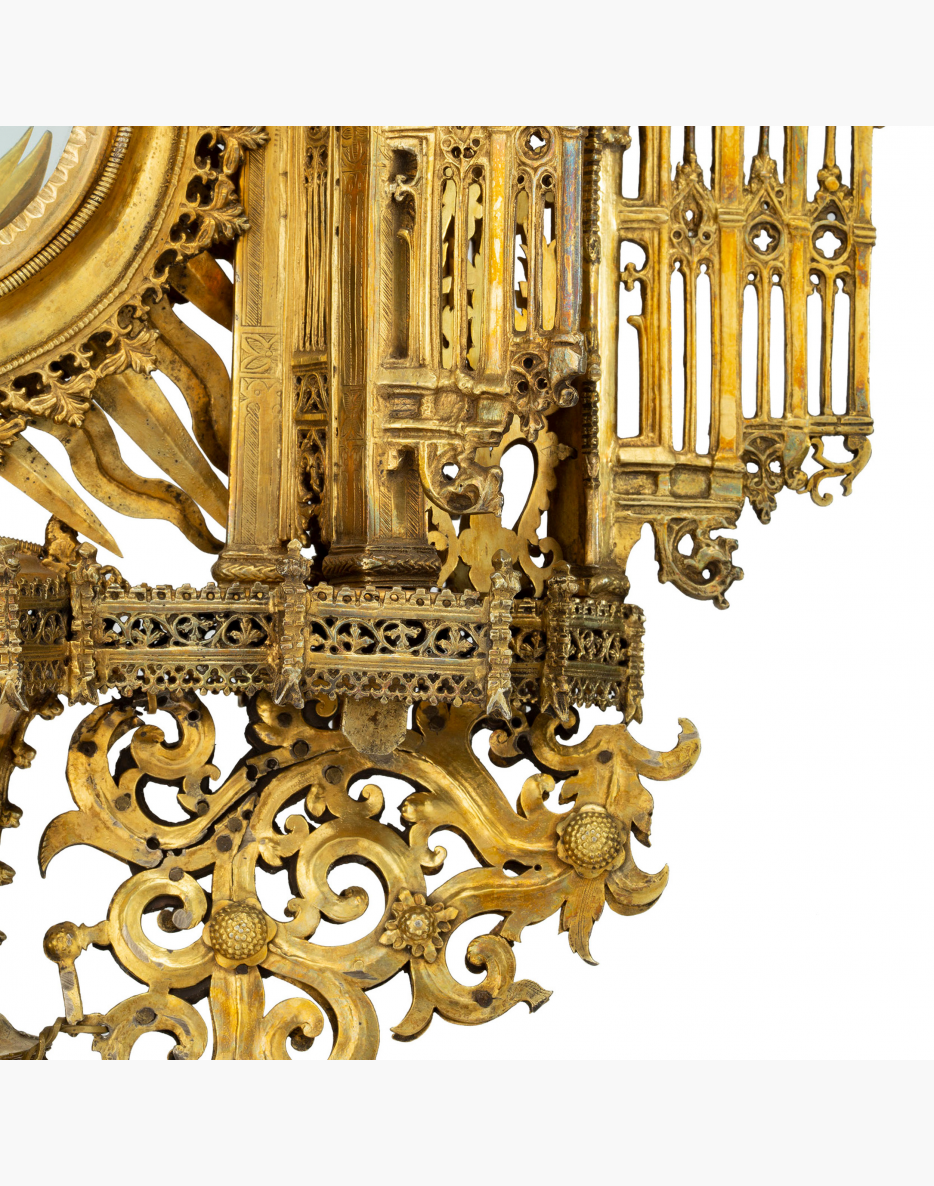Vilnius, late 15th c. – early 16th c., 2nd half of the16th c. – early 17th c., restored in 19th c.
The main monstrance kept at the Bernardine Church of St Francis of Assisi had always been considered to be a gift to the monastery by King Casimir Jagiellon (1427–1492), to celebrate its founding. However, there is some substantiated doubt regarding the period when it was made. The difference in style and form of separate parts suggests that the uniquely structured monstrance may have been created in the second half of the 16th century or early 17th century using the surviving parts of an earlier piece or earlier moulds. This may have happened after the fire of 1564 when the damaged Monastery of Observant Franciscans was being rebuilt, and which took several decades.
The Observant Franciscans of Vilnius treasured the monstrance. When the Russian army took over Vilnius in 1655 and temporarily made their home at the monastery, the monstrance and several other major valuable artefacts were buried in the garden, and as a result, they survived.


